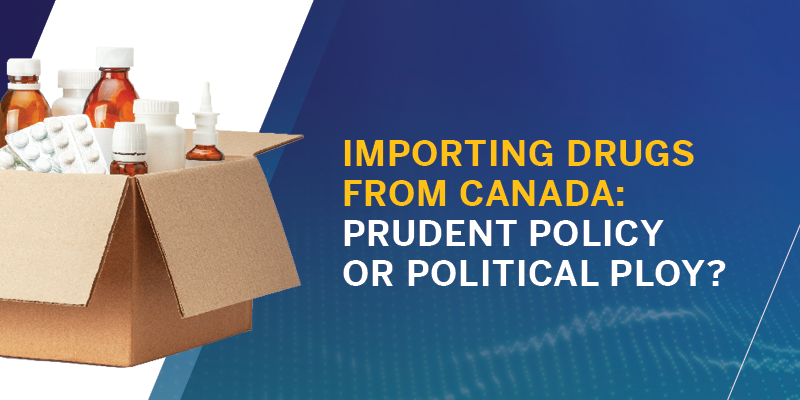
Kevin Barton, Vice President, Product Innovation & Automation, Healthcare Solutions
The following should not be considered formal guidance on, or legal advice regarding, any element or aspect of regulatory compliance.
The recent decision by the Food and Drug Administration to approve Florida’s Canadian Prescription Drug Importation Program was definitely a new development in the “Will Canadian drug imports solve anything?” saga, but that the FDA gave the state the go-ahead should be no real surprise to anyone.
However, seeing the program fully implemented and delivering the projected savings in any reasonable amount of time (or at all) will, most certainly, be a surprise.
Approval is one thing; implementation is another.
The most immediate challenges are, of course, regulatory. And they are significant.
Before the state’s Agency for Health Care Administration (which administers the program) can import drugs, it has to meet a number of requirements per the FDA. Among them, the state must ensure that the drugs have been tested for authenticity and compliance with the FDA-approved drugs’ specifications and standards and the drugs must be relabeled to be consistent with the FDA-approved labeling.
That is a two-item “to do” list that could take years to fully enable and complete. Given what the industry has experienced during implementation of the Drug Supply Chain Security Act, it’s very, very difficult to imagine how a single section 804 importation program (SIP) is going to -- in anything resembling a timely and cost-efficient manner -- establish a supply chain with Canadian manufacturers that is compliant with applicable federal regulations including DSCSA and the Pure Food, Drug, and Cosmetic Act.
Regardless of how they progress, Florida’s efforts to ensure patient safety will be watched closely by Texas, Colorado and New Mexico -- leaders among the other states working to establish importation programs. Will Florida’s approach enable a template? Only time will tell.
There’s also a “savings” requirement.
The Federal Food Drug and Cosmetic Act Section 804 -- under which Florida petitioned for the program -- permits importation of prescription drugs from Canada provided the importation “results in a significant reduction in costs to consumers.”
How Florida’s program will deliver on that requirement is not immediately obvious.
According to the Governor's Office, the imported drugs will be provided to individuals under the care of Florida’s Agency for Persons with Disabilities, Department of Children and Families, Department of Corrections and Department of Health and will comprise a small number of drug classes including maintenance medications for treating chronic health conditions such as HIV/AIDS, mental illness, prostate cancer and urea cycle disorder.
Given the limited scope of the program and its focus on serving Florida’s vulnerable populations, should it be presumed that these groups willI collectively save a projected $180 million a year through lower prescription medication costs?
That seems optimistic. And language around the effort (“Florid will save…” ) could be interpreted to point more to state agencies saving money through reduced medication expenditures for those in their care as opposed to consumers recognizing savings at the pharmacy counter.
If all goes according to plan, there will be benefit to those in need and some savings will be realized, but will Section 804 be satisfied?
Florida’s experience will be telling.
Efforts by states to establish drug importation programs have received assistance from both the Biden and Trump administrations with that support based on the belief that importation from Canada will result in savings for consumers in the US -- and, logically, leveraging lower bulk pricing is not a bad place to start in bringing down patient costs.
Yet, with all the regulatory complexities attached to program implementation and the considerable costs required to achieve compliance, how likely is it that consumers will see any real savings? What’s more, any future measurement of resulting savings assumes the institution of myriad supply chain enhancements and their successful deployment is far from certain.
The issue of prescription drug prices is a political football and Florida is celebrating that they’re moving downfield toward lowering drug costs, but there’s much to challenge that they’ll ever see the end zone. Perhaps, though, the state’s experience will be instructive such that lawmakers will finally commit to developing meaningful domestic policy and stop flirting with the idea of foreign relief.
Contributions by Greg Brownstein, Inmar Healthcare
